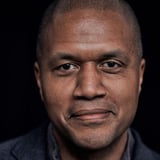Summary
Did you know that the SUS creates biases in your research, affecting one in five people? That’s right! People with disabilities, especially those who use assistive technology, are not considered by most of the questions in the SUS. When the SUS was invented, the author encouraged people to change it to suit different needs. In this talk, Samuel Proulx and Abid Virani from Fable will discuss how Fable adapted the SUS to work for assistive technology users. Drawing from over five thousand hours of research and testing involving assistive technology users, we created the Accessible Usability Scale (AUS). This presentation will include trends in AUS responses since it was released in December of 2020.
Key Insights
-
•
Assistive technology users fall broadly into three groups: screen reader users, screen magnification users, and alternative navigation users.
-
•
Screen reader users often face the greatest usability challenges due to lack of backup navigation options.
-
•
Screen magnification tools sometimes incorporate screen reader features to reduce eye strain and aid users with partial vision loss.
-
•
Alternative navigation users leverage multiple input methods, including voice commands, head mice, and coordinate grids, to overcome interaction barriers.
-
•
Traditional usability labs are poorly suited for testing with assistive technology users because they use unfamiliar setups that aren't customized.
-
•
Remote usability testing better captures authentic user experiences by allowing assistive technology users to test in their optimized environments.
-
•
The original System Usability Scale (SUS) includes language and assumptions that are often unclear or irrelevant to assistive technology users.
-
•
Fable developed an Accessible Usability Scale (AUS), modifying SUS questions to focus on specific features and removing technical assumptions for better relevance.
-
•
Experience level with assistive technology and timing of disability onset deeply influence users’ mental models and usability perceptions.
-
•
Usability should be assessed on both accessibility and efficiency — a feature that takes much longer for assistive technology users to complete may be considered inaccessible.
Notable Quotes
"Assistive technology is a group of technologies that people with disabilities use to access computers, grouped mainly into screen readers, magnification, and alternative navigation."
"The primary customization for screen reader users is speed — expert users can listen to synthetic voices at over 300 words per minute and fully understand."
"Magnification tools may include screen reader features because users can get eye strain and prefer to have content read aloud from a specific spot."
"If a screen reader can’t activate or describe a button, the user has no backup other than getting someone with sight involved."
"Traditional usability labs force assistive technology users to use unfamiliar setups, which can drastically impact their performance."
"Remote testing helps users be in comfortable, accessible environments with fully customized assistive technology setups."
"I am a technical person and I can't use this system — sometimes you don’t need a technical person, you just need someone who can see to help with barriers."
"Accessibility is a spectrum, not a checkbox — some features might require assistance but the rest of the product can be fully accessible."
"We’ve ruled out self-reporting skill levels because novice users often overestimate their expertise and near-experts underestimate theirs."
"It’s not just user skill with the system, but also the broader ways people use technology that determines their experience and accessibility needs."
Or choose a question:














More Videos

"Don't be cool, be good—work hard at managing your teams because they need you to nail it."
Adam Cutler Karen Pascoe Ian Swinson Susan WorthmanDiscussion
June 8, 2016

"Developing trust means showing you understand what it takes to get something shipped, that you’re reliable, and that people can be vulnerable with you."
Peter MerholzThe Trials and Tribulations of Directors of UX (Videoconference)
July 13, 2023

"Nobody knows who’s supposed to decide what around digital, and that’s the problem."
Lisa WelchmanCleaning Up Our Mess: Digital Governance for Designers
June 14, 2018

"Transportation must evolve to be more sustainable and accessible for all."
Vincent BrathwaiteOpener: Past, Present, and Future—Closing the Racial Divide in Design Teams
October 22, 2020

"The squad model flopped for us after six months but created culture triads that stuck around."
Brenna FallonLearning Over Outcomes
October 24, 2019

"Treat identities as elastic, not as fixed personas, because people’s needs and roles are complex and changing."
Tricia WangSpatial Collapse: Designing for Emergent Culture
January 8, 2024

"Diverging and converging around the business model canvas helped us test and prototype delivery methods for the value propositions."
Edgar Anzaldua MorenoUsing Research to Determine Unique Value Proposition
March 11, 2021
"We manage the environment in which knowledge distribution takes place, not the process itself."
Designing Systems at Scale
November 7, 2018

"Ethics evolve faster than law; just because something is legal doesn’t mean it’s ethical."
Erin WeigelGet Your Whole Team Testing to Design for Impact
July 24, 2024
















